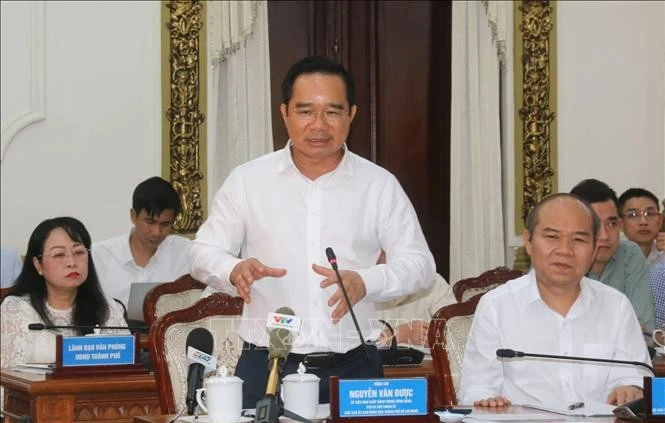Regarding the causes, the issues stem from both donors and domestic obstacles related to institutions, processes, and procedures in Viet Nam — from negotiations to the disbursement of ODA funds. For example, the current Law on Public Debt Management stipulates procedures for ODA capital that are cumbersome, requiring approval across multiple ministries and sectors — and the same holds true when the process moves to local authorities; the procedures are twice as extensive as those for domestic public investment projects funded by the national budget.
Additionally, localities also face issues in project implementation: funds are available but cannot be disbursed, agreements expire, and donors are forced to withdraw the undisbursed capital, which is an extremely regrettable situation.
At present, a key condition for deciding whether to borrow ODA capital is ensuring financial effectiveness, as this is the basis for mitigating concerns about inflation and avoiding risks to national public debt servicing and the country’s sovereign repayment burden. Borrowing should not be pursued at any cost, but in the context of ongoing budget constraints, ODA must be given particular strategic attention to ensure progress in arranging and securing loan agreements, guarantee efficient project implementation, and rapidly channel resources into socio-economic development.
To address these barriers, the draft law promotes greater devolution and decentralisation, particularly by assigning the Prime Minister the authority to decide the annual ceilings for ODA on-lending and government guarantees—transferring these powers from the Government to the Prime Minister—which helps simplify and shorten approval processes.
The draft law also assigns to the Ministry of Finance the authority to decide on the amendment, supplementation, and extension of ODA and preferential loan agreements, provided that such changes do not increase the Government’s foreign debt repayment obligations. This provision also creates greater flexibility during implementation and reduces administrative procedures.
However, to support the Government in mobilising capital more effectively in the coming period, as well as ensuring consistency in public debt management activities, some deputies proposed adding the principle of all government debt obligations must be treated equally. According to the deputies, this principle demonstrates the Government’s commitment and responsibility to repay debt under equitable treatment. This principle is also one of the key criteria used by credit rating organisations to assess national debt risk profiles, making its legal codification necessary.
On that basis, it is necessary to stipulate the responsibilities of relevant agencies to publicly disclose, in a full and timely manner, information on debt obligations, the status of capital usage, and repayment, to enable competent oversight bodies to easily track, monitor, and supervise the effective use of borrowed capital. It is also necessary to include provisions ensuring openness and transparency for any special circumstances that may arise and how they would be prioritised, for example, emergency debt arrangements to safeguard national financial security.
Additionally, it is necessary to strengthen the role of the State Audit Office and agencies under the National Assembly in auditing and supervising the fulfilment of debt repayment obligations, ensuring compliance with the principle of equal treatment among creditors; enhance the capacity of the public debt management workforce, particularly in negotiations and understanding of international legal clauses, to apply this principle flexibly and effectively; and intensify fiscal risk management arising from borrowing and ODA on-lending activities, clearly linked to the responsibilities of all relevant parties.
According to feedback from NA deputies, the lack of stronger application of information technology and digital transformation in document exchange, appraisal, verification, and approval—aimed at ensuring time efficiency and cost savings—remains limited.
Notably, there are currently no provisions governing a data or information system for sharing public debt figures between the central and local authorities, and the calculation as well as the reconciliation of debt and repayments among debt management agencies is still carried out manually.
To ensure more effective public debt management that meets the requirements for timely and accurate administration, it remains necessary to further consider and include provisions assigning to the Ministry of Finance the responsibility for enforcing an interconnected public debt information system across the central authorities, local authorities, and individual units, such as data exchange, reconciliation of capital withdrawals, and debt repayment.
















